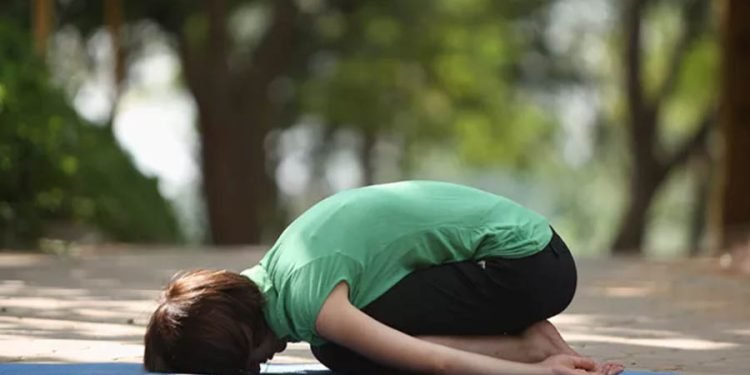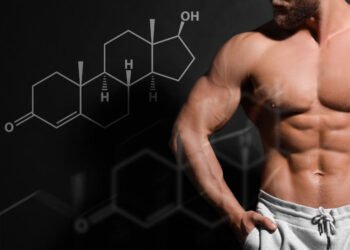Let’s get straight to the point: yoga mudras are particular hand gestures designed to help the body and mind circulate Prana, or energy, for optimal health. The Sanskrit word “mudra” literally translates to “hand gesture.” Did you know that mudras are used to convey deeper meanings in numerous Hindu and Buddhist rituals and dance forms?
Yoga includes asanas and pranayama. Most beginners in yoga do not know that yoga mudras, or hand gestures, are also a part of the Vedic healing practice. But wait, there’s more to it than that. Yoga mudra is the art of using hand gestures along acupuncture meridians to change or redirect the flow of energy throughout the body, bringing our energy body into perfect balance.
Hands are regarded as the body’s control panel because they contain all acupuncture meridians. The five fingers of a hand represent the five body elements—fire, water, air, earth, and sky—that make up the Pancha Mahabhuta. Ayurveda says that the body needs these energies to be in balance for it to be in its best health and balance.
The Sanskrit word mudra means something which brings union between the Yogi and the Divine by dissolving duality. Yoga mudras actually alter the flow of energy, or prana, with the help of these acupuncture points on our palms and fingers when we bend, press, cross, extend, or touch our fingers with other fingers. This in turn influences and stimulates specific brain regions and contributes to restoring the body’s elemental balance. Consider the “Namaste” salutation, which is a handshake we use on a daily basis to show our appreciation. It is nothing more than the “Anjali Mudra”.
Yoga asanas and physical poses can sometimes be impossible to perform when you are ill or recovering from an injury or surgery, or when you are traveling and don’t have enough space for them.
How are Yoga Mudras Carried Out?
Mudras can be used in conjunction with meditation and breathing exercises to control how energy moves through the body. It takes time to develop an awareness of these mudras’ effects.
- Sit comfortably in either Vajrasana (diamond pose), Sukhasana (easy pose), or Padmasana (lotus pose) to begin practicing. If you don’t like sitting on the floor, you can sit in a chair with your back straight.
- Sitting in a calm, quiet, and free of distractions location is ideal. The healing power is increased and it is easier to observe the sensations that arise when the eyes are closed.
- Rub your hands for 20 to 30 seconds to start the circulation in the first step. The friction will cause your hands to warm up, indicating that all of the nerve endings in them have been activated, stimulating every cell connected to various organs.
- Place your palms upturned on your lap.
- Try to focus on the peace and quiet of nature and feel the tingling or pulsating sensations in your hands and body.
- Keep your position like this for at least 15 seconds.
- After that, press your fingers together in specific patterns to perform a variety of mudras.
Remember to apply enough pressure to feel the energy moving.
Yoga Mudra and Its Effect on Our Body
Our energy system controls our physical body and an imbalance in energy between the various organs can cause diseases. Mudras can assist in balancing these prana (energy) levels. Some common types of mudra are listed below:
Gyana Mudra
This is one of the most widely utilized mudras by yogis and the least demanding to do. Gyana mudra, which can be performed at any time in conjunction with pranayamas and meditation.
- Place your hands on your lap, palms facing upward.
- Stretch out the other three fingers on each hand.
- Join the tips of your thumb and index fingers
- Hold that position for a few minutes while focusing on your breathing.
Vayu Mudra
Vayu Mudra is for experiencing lightness and release. This mudra helps to balance the air element in our bodies. It also helps to manage insomnia, eases tension, and improves positive feelings. This in turn improves our power of concentration and learning. Because the air element is associated with the vata dosha, this mudra is beneficial for people with vata bodies and helps alleviate a variety of pains, including sciatica and arthritis.
- Fold your index finger in half and use your thumb’s tip to touch the second phalanx bone.
- Apply slight pressure to ensure that the index finger’s tip touches the thumb’s base.
- Keep the remaining three fingers activated while you straighten them.
- Hold that position for a few minutes while focusing on your breathing.
Surya Mudra
Also known as the Mudra of Fire Elements, Surya mudra generates heat in the body which helps in easing indigestion and maintaining a healthy body temperature. This mudra reduces the Kapha element in our bodies. It is also known as the “Agni Vardhak Mudra,” which increases the Pitta (fire), and the “Prithvi shamak Mudra,” which lowers Kapha (Earth). If you have acid reflux or indigestion, you should not overdo this mudra and try some other mudras.
- With your ring finger bent inward and its tip at the base of your thumb, lightly press on the second phalanx bone with your thumb.
- Extend the remaining three fingers.
- Hold that position for a few minutes while focusing on your breathing.
A Final Word
Through neural activation, the fingertips of your hands are making a strong connection with your brain. Some yoga mudras will adjust the components in one’s body in no less than 45 minutes or less. Nevertheless, some mudras may take some time to fully manifest. One should practice yoga mudras frequently. Within 45 minutes or less, some yoga mudras can bring one’s body’s elements into balance.
FAQs
What is yoga mudra?
Mudra translates to “seal,” “gesture,” or “mark.” Yoga mudras are symbolic hand and finger gestures that help the subtle body’s energy flow and enhance the inner journey of the practitioner.
What are the 5 mudras?
Five yoga and meditation mudras are
- Vayu mudra
- Chin mudra
- Namaskar mudra
- Gyana (Jnana mudra)
- Dhyana mudra
How many mudras are there in yoga?
They are used a lot in dance, yoga, and meditation. It is estimated that there are close to 399 mudras in various fields.












